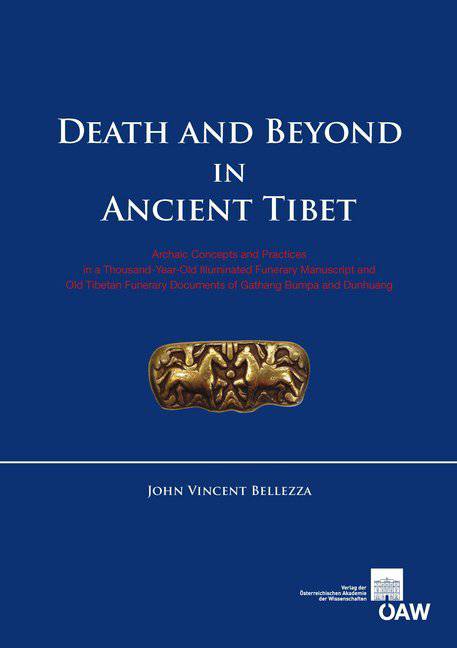
- Afhalen na 1 uur in een winkel met voorraad
- Gratis thuislevering in België vanaf € 30
- Ruim aanbod met 7 miljoen producten
- Afhalen na 1 uur in een winkel met voorraad
- Gratis thuislevering in België vanaf € 30
- Ruim aanbod met 7 miljoen producten
Zoeken
Death and Beyond in Ancient Tibet
Archaic Concepts and Practices in a Thousand-Year-Old Illuminated Funerary Manuscript and Old Tibetan Funerary Documents of Gathang Bumpa and Dunhuang
John V Bellezza
Paperback | Engels | Beiträge zur Kultur- und Geistesgeschichte Asiens | Denkschriften der Philosophisch-Historischen Klasse | nr. 77
€ 153,45
+ 306 punten
Omschrijving
This monograph brings to light the eschatological patterns and procedural constructs of death rites in ancient Tibet. It is centered on documents written between circa 800 CE and 1100 CE, which include an illuminated funerary manuscript of much rarity, two death ritual texts recently recovered in southern Tibet from the Gathang Bumpa religious monument, and several related manuscripts discovered in the Dunhuang grottoes a century ago. This book builds upon previous efforts of the author to explicate the otherworldly dimension in early Tibetan religion and culture. Many of the documents of this study were written in the Old Tibetan language and represent the oldest known literary sources for research into Tibetan funerary traditions. The work is underpinned by annotated translations, which are critically edited and painstakingly provided with Classical Tibetan word equivalents. Each featured text is described in detail and subjected to a rigorous religious and historical analysis. Other Tibetan literature that supports the comprehension of the foundational texts of this study is also marshaled. These textual assets complement one another by progressively revealing an indigenous belief system and praxis of great depth and intricacy. The antiquated narrations and rituals concerning death presented in this book furnish a lucid view of cultural forms that circulated around Tibet before its religious universe became saturated with Buddhism and Buddhist-influenced doctrines and practices. Especially when seen through the lens of the archaeological record, the sheer intellectual and material wealth borne in the archaic funerary traditions demonstrates that Tibet was endowed with culturally advanced societies in the time before the spread of Lamaism. Bibliographies and indexes (with glossary) are appended to the main text.
Specificaties
Betrokkenen
- Auteur(s):
- Uitgeverij:
Inhoud
- Aantal bladzijden:
- 292
- Taal:
- Engels
- Reeks:
- Reeksnummer:
- nr. 77
Eigenschappen
- Productcode (EAN):
- 9783700174332
- Verschijningsdatum:
- 24/05/2013
- Uitvoering:
- Paperback
- Formaat:
- Trade paperback (VS)
- Afmetingen:
- 208 mm x 295 mm
- Gewicht:
- 898 g

Alleen bij Standaard Boekhandel
+ 306 punten op je klantenkaart van Standaard Boekhandel
Beoordelingen
We publiceren alleen reviews die voldoen aan de voorwaarden voor reviews. Bekijk onze voorwaarden voor reviews.








